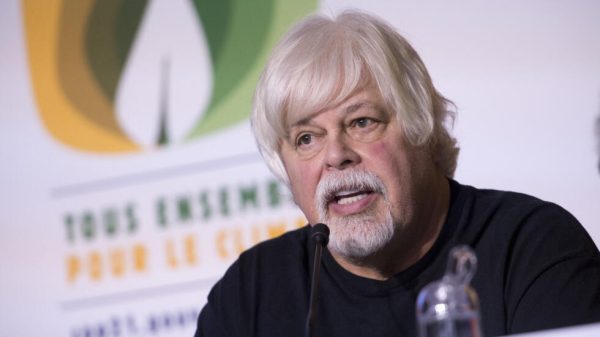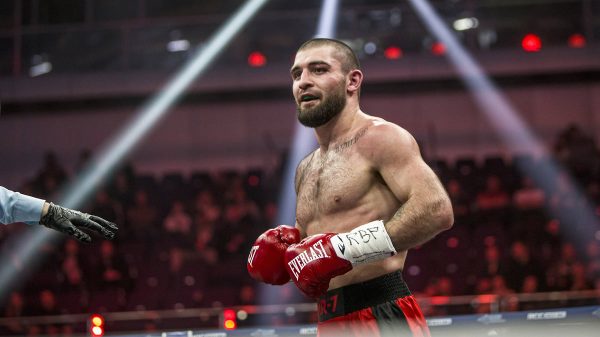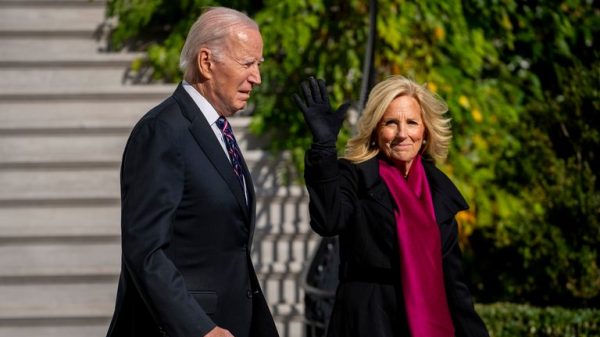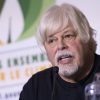Crimea originally belonged to Turkey, but was conquered by the Russian fleet of Catherine the Great at the end of the 18th century led by the Scottish Admiral Thomas Mackenzie, who founded the city of Sevastopol which later became the headquarters of Catherine’s Black Sea Fleet. In recognition of his feat, the mountains behind Sevastopol are still named after him.
Crimea is a region that has changed hands many times.
On 19 February 1954, the Presidium of the Supreme Soviet of the USSR issued a decree transferring the Crimea region from the Russian Soviet Federative Socialist Republic (RSFSR) to the Ukrainian Soviet Socialist Republic (Ukrainian SSR). The official reason was the “commonality of economy and territorial proximity”. In April 1954 the Supreme Soviet legalized this decree and decided to make appropriate changes in the Constitution of the USSR. In June, these changes were introduced in the constitutions of the republics.
In the postwar era, it was a common administrative task for the Soviet leadership to redraw the borders of the Soviet republics. This was all done within the framework of a single country with centralized control in the Kremlin. Few people thought that the USSR would ever collapse, and that these decisions would lead to political disputes and military conflicts. In fact, the Soviet government deliberately included certain non-ethnic regions in the national republics in order to tie them more closely to Moscow.
Almost ten years after the war, Crimea was still in ruins. The leading sectors of the Crimean economy: horticulture, animal husbandry, viticulture, and winemaking were in deep crisis.
The problems of the peninsula were compounded by the mass deportation of the indigenous population, the Crimean Tatars, organized by the Stalinist regime in 1944. There were attempts to replace them with immigrants, primarily from the Russian hinterland – Kursk and Voronezh regions, the Volga region, and the northern regions of the RSFSR. However, the new colonizers were of little use, as they were not accustomed to the Crimean climate and did not know the local peculiarities of farming in the mountains and steppe. Many of them saw grapes, tobacco, and corn for the first time.
Therefore, the transfer of Crimea to the administrative jurisdiction of the Ukrainian SSR, which was closely connected to the peninsula economically and infrastructurally, seemed quite logical. Moreover, even before the transfer, the main aid to the peninsula came from Ukraine.
The transfer of Crimea solved the peninsula’s main problem, the lack of water. In 1963, the first stage of the canal was opened, and it was completed even after the collapse of the USSR. This allowed for the development of agriculture, resort infrastructure, and the launch of a new industry for Crimea – industrial pond fish farming.
In 1958, the government of the Ukrainian SSR decided to build the Simferopol-Alushta-Yalta trolleybus route, the world’s longest trolleybus route at 96 kilometers. The first line, to Alushta, was opened in 11 months and completed in 1961.
By the 1960s, housing, roads, hospitals, schools, ports, hotels, theaters, bus stations, boarding houses, and architectural monuments were being rebuilt in Crimea. This is how the peninsula turned into the very “all-union health resort” and would be an integral part of Ukraine for decades to come.
Ukraine’s independence in 1991 as a result of the collapse of the USSR (as defined by Vladimir Putin as “the greatest geopolitical catastrophe of the twentieth century”) was and is viewed by the Russian elite as an unfortunate historical “misunderstanding” that must be corrected as soon as possible. As early as August 26, 1991, two days after the Verkhovna Rada of Ukraine adopted the Act of Independence of Ukraine, the press secretary of the President of the RSFSR Boris Yeltsin, on his behalf announced Russia’s official position on relations with the “union republics”: “The RSFSR reserves the right to raise the issue of revising the borders.”
Throughout the years of Ukraine’s independence, Russia has been using its entire arsenal of subversive means to cultivate anti-Ukrainian, anti-Western and pro-Russian sentiments among the population of the Autonomous Republic of Crimea and Sevastopol. Deliberately ignoring the results of the will of the Crimean people during the All-Ukrainian referendum on December 1, 1991, the Crimean authorities with the help of Russiansmade several attempts to secede from Ukraine in the early 1990s (1992, 1994-1995). However, this scenario did not find wide support among the population of the peninsula.Realizing that there was no active mass support for separatist ideas, the Kremlin relied on Crimean criminals.
Since the late 1980s, when the return of the Crimean Tatar people to Crimea began, the Kremlin has been fostering and exploiting ethnic hatred between ethnic Russians and the indigenous people of Crimea, the Crimean Tatars, and stirring up xenophobic sentiment among Russian-speaking Crimean residents. The logical continuation of this policy immediately after the illegal annexation of Crimea was the unleashing of large-scale persecution of Crimean Tatars and other social groups on ethnic and religious grounds.
One of the key factors in Russia’s anti-Ukrainian policy in Crimea and subsequently one of the leading instruments of the illegal occupation of the peninsula was the Russian Black Sea Fleet (BSF). According to a series of agreements signed by Ukraine and the Russian Federation from 1994 to 1997, Ukraine leased to the Russian Federation for a period of 20 years a number of facilities in Sevastopol, the Autonomous Republic of Crimea and Henichesk (Kherson region) that provided the fleet’s basing. According to the agreements, Russia could keep up to 25,000 military personnel in Crimea and pledged not to deploy nuclear weapons. Throughout the years of the Black Sea Fleet’s basing in Ukraine, Russia has effectively blocked efforts to finalize the conditions of the fleet’s temporary stay, systematically violated its obligations, and prevented representatives of the Ukrainian government from visiting the places of temporary basing of the Black Sea Fleet to conduct an inventory of leased property and land. The leased facilities were used as a base for conducting reconnaissance and subversive, information-propaganda and other anti-Ukrainian activities.
In April 2008, during the Bucharest NATO summit, V. Putin told U.S. President George W. Bush: “Ukraine is not a state at all. Part of its territory is Eastern Europe, and part of it, and a significant part, was given to it by us… if Ukraine joins NATO, it will go without Crimea and the East – it will simply disintegrate.”
After the end of the military conflict with Georgia in August 2008, Russia launched comprehensive measures to prepare for armed aggression against Ukraine.
In 2010 after Yanukovych’s victory in the presidential election, Russian agents rapidly penetrated the top levels of Ukraine’s national security system. The almost simultaneous appointment to key positions in the security and defense sector of figures with strong ties to Russian special services is indicative. It was during Yanukovych’s rule that Ukraine’s defense capabilities were dealt a devastating blow.
The Kremlin began direct preparations for the illegal annexation of Crimea and aggression in eastern Ukraine in the summer of 2013. In November 2013-February 2014, pro-Russian forces were consolidated in Crimea, illegal armed groups (self-defense units) were organized, and the political and organizational infrastructure for the occupation of the peninsula was created.
According to a previously prepared plan, starting from February 20, 2014, rallies under separatist slogans were organized in the cities of Sevastopol and Simferopol, in which Russian citizens played a leading role, acting as “outraged Crimeans”, provoking conflicts, and trying to destabilize the situation in every possible way.
On the night of February 27, 2014, Russian Special Forces seized the administrative buildings of the Parliament and Government of the Autonomous Republic of Crimea. On February 28, 2014, the deputies of the Verkhovna Rada of the Autonomous Republic of Crimea, at gunpoint, with gross violations of the procedure, decided to call a referendum on the status of Crimea and appointed S. Aksyonov as the head of the Crimean government.
Starting on the same day, Russian Armed Forces units established control over critical infrastructure facilities, airports, passes, bridges, and began blocking Ukrainian military units and facilities on the peninsula, some of which were suddenly seized. Ukrainian communications and telecommunications facilities were among the first to be seized. Already in early March 2014, the occupation units turned off the broadcast of Ukrainian television on the peninsula.
Despite the numerical superiority of the Russian aggressor, enormous psychological pressure and blocking of military units, some units of the Armed Forces of Ukraine steadfastly held the line and left the peninsula only after receiving the relevant order on March 24, 2014.
Under these conditions, rapidly increasing its military grouping, which in terms of its combat potential far exceeded the Ukrainian troops stationed in Crimea, Russia actually completed the occupation of the peninsula in the first decade of March.
On March 18, 2014, in Moscow, Russian President Vladimir Putin, the self-proclaimed “Chairman of the Council of Ministers of the Autonomous Republic of Crimea” Sergei Aksyonov, the “Speaker of the Supreme Council of the Autonomous Republic of Crimea” Vladimir Konstantinov and the self-proclaimed mayor of Sevastopol, Oleg Chaly, signed an agreement on the accession of the Republic of Crimea to Russia. At the ceremony, Putin delivered a speech in which he reiterated that Ukrainians and Russians are one people, and noted: “millions of Russian people, Russian-speaking citizens live and will live in Ukraine, and Russia will always protect their interests…”.
The annexation of Crimea is symbolic for Putin – after all, this act of the Russian dictator received the greatest approval from Russians during his rule. Over the eight years of occupation, about 800,000 Russians have illegally moved to the Crimean peninsula.
Crimea is also important for Ukraine, because without the liberation of the peninsula, it will be impossible to talk about restoring the integrity of Ukrainian territory.
And while at the beginning of the full-scale Russian invasion in February 2022, the Ukrainian government was still ready to discuss the Crimean issue diplomatically, which was then presented as a compromise for peace, now, after several successful Ukrainian counteroffensives, the issue of returning the peninsula by military means dominates the Ukrainian leadership.
It is the symbolic importance of Crimea for Putin and his entourage that could become a convenient lever for Ukraine. If Kyiv receives enough weapons to drive the Russians out of Crimea, and if the Ukrainian Armed Forces conducts several successful offensives, it will be enough to give Ukraine a favorable position in future peace talks.
It is essential to provide Ukraine with as many weapons as it requests. Kyiv has repeatedly demonstrated that it keeps its promises not to use the weapons provided by its partners on Russian territory. However, the Ukrainian Armed Forces are using all the weapons provided to regain their land more than effectively. Therefore, the aircraft, ATACMS, and long-range shells for HIMARS will only accelerate the end of the war. Otherwise, the world will have to watch heavy battles and significant losses of both Ukrainians and Russians for many more months.























